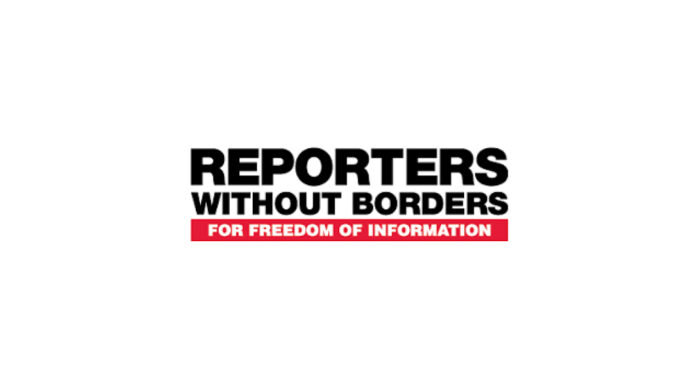Media freedom organization Reporters Without Borders (Reporters Sans Frontiers or RSF) tallied 65 journalists and media workers killed, 326 imprisoned, 54 held hostage and two missing in 2017, according to figures released on December 19.
Of the 65, 39 (60%) were murdered or deliberately targeted and 26 (40%) were killed while reporting. This death toll was the least deadly in 14 years, with the downward trend credited in part to “campaigns waged by international non-government organizations and media organizations on the need to provide journalists with more protection.”
The most dangerous country in the world for journalists is Syria (12 killed), that held the post since 2012. It is followed by Mexico (11 killed), Afghanistan (9 killed), Iraq (8 killed) and the Philippines.
The Philippines is the deadliest country in Asia-Pacific, where four of five attacked journalists were killed.
RSF noted the threats to journalists in the Philippines coming from the highest leader in the land. It said “shortly after being elected president of the Philippines in May 2016, Rodrigo Duterte made this cryptic but alarming comment: “Just because you’re a journalist you are not exempted from assassination, if you’re a son of a bitch.” The threat proved to be more than just talk in 2017.”
The Philippines was also ranked 127, up by 11 points from last year but raking less 3.58 points in its global score, in the world press freedom index. The world press freedom index is topped by Norway, and at the bottom is North Korea in 180th place.
Trends in world press freedom
In a report in April, he trends in the world press freedom index observed by RSF include: democracies falling, advent of strongmen; media freedom never so threatened; and rises, falls and illusory improvements.
“Democracies began falling in the Index in preceding years and now, more than ever, nothing seems to be checking that fall,” said the report.
Surveillance and violations of the right to the confidentiality of sources have contributed to the continuing decline of many countries previously regarded as virtuous, including United States (down 2 places at 43rd), the United Kingdom (down 2 at 40th), Chile (down 2 at 33rd), and New Zealand (down 8 at 13th), RSF said.
RSF said media freedom has also notably retreated wherever the authoritarian strongman model has triumphed.
“The rate at which democracies are approaching the tipping point is alarming for all those who understand that, if media freedom is not secure, then none of the other freedoms can be guaranteed,” RSF secretary-general Christophe Deloire said. “Where will this downward spiral take us?”
“In Asia, the Philippines (127th) rose 11 places, partly because of a fall in the number of journalists killed in 2016, but the insults and open threats against the media by President Rodrigo Duterte, another new strongman, do not bode well,” said RSF.
RSF also said that some countries which are not at war have become as dangerous for reporters as war zones, with 46 percent of deaths occurring in such places in 2017, as against 30 percent the previous year. Of countries not at war, Mexico is the deadliest country this year and the last.
“Although fewer journalists have been killed in connection to their work in recent years, Philippines continues to be one of the most dangerous countries for the media. Private militias, often hired by local politicians, silence journalists with complete impunity. An airtime rental system known as blocktiming is widely practiced, allowing anyone to host their own political program. This in turn blurs the frontiers of journalism. The media are fairly free and diverse, but Rodrigo Duterte, who was sworn in as President in June 2016, has alarmed media freedom defenders with his unveiled encouragement of violence against journalists,” said RSF.





























